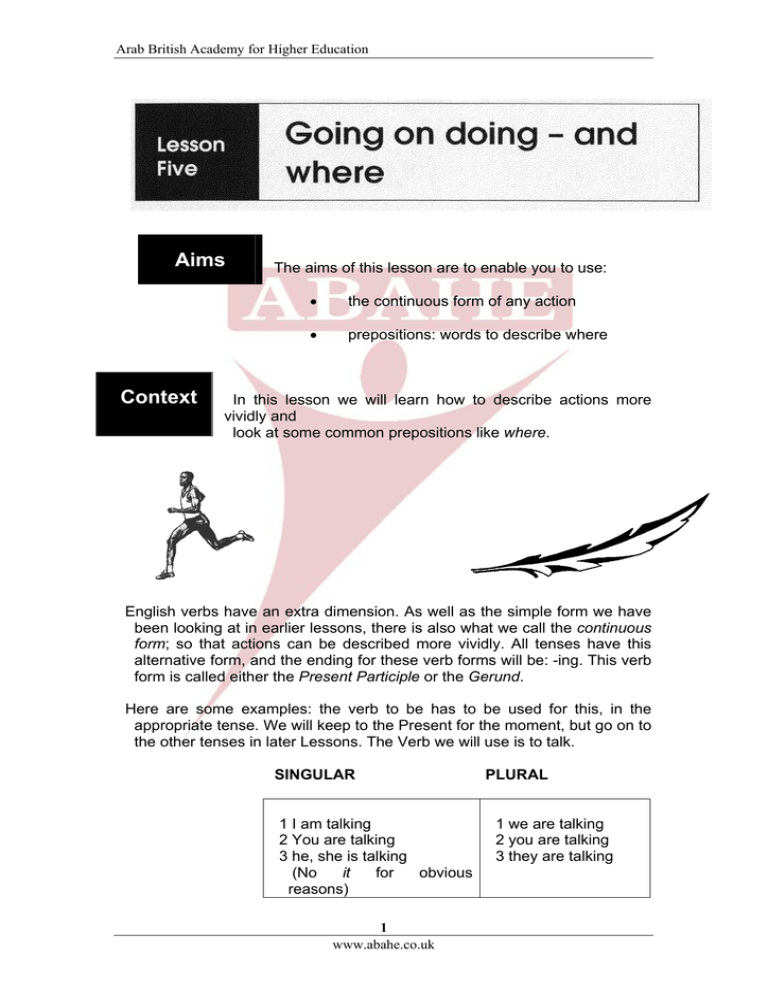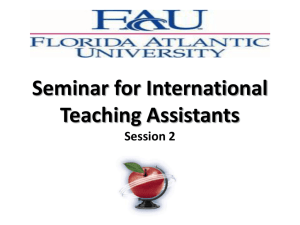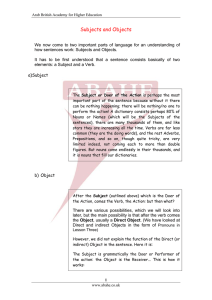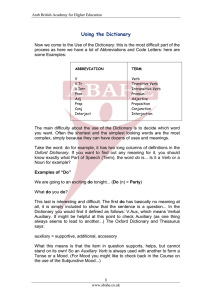
Arab British Academy for Higher Education
Aims
Context
The aims of this lesson are to enable you to use:
the continuous form of any action
prepositions: words to describe where
In this lesson we will learn how to describe actions more
vividly and
look at some common prepositions like where.
English verbs have an extra dimension. As well as the simple form we have
been looking at in earlier lessons, there is also what we call the continuous
form; so that actions can be described more vividly. All tenses have this
alternative form, and the ending for these verb forms will be: -ing. This verb
form is called either the Present Participle or the Gerund.
Here are some examples: the verb to be has to be used for this, in the
appropriate tense. We will keep to the Present for the moment, but go on to
the other tenses in later Lessons. The Verb we will use is to talk.
SINGULAR
1 I am talking
2 You are talking
3 he, she is talking
(No
it
for
obvious
reasons)
1
www.abahe.co.uk
PLURAL
1 we are talking
2 you are talking
3 they are talking
Arab British Academy for Higher Education
The Continuous form is made up by adding ing to the Infinitive of the verb;
(we shall refer to the Infinitive shortly, it is the name of the verb and that is
what you find in dictionaries...)
Continuous Form: Examples
To be - being
to have - having; (please notice the missing e);
to go - going,
to write - writing (also please notice the missing e)
Activity 1
Please put the following verbs into the continuous form:
a) I play; we see; they have; she speaks
b) we do; they do not travel
C) we are; they do not have; Paul asks; Elizabeth does not go
(You have to use to be in all These forms...)
Key:
Activity One
a)
b)
c)
I am playing; we are seeing; they are having; she is
speaking
we are doing; they are not travelling.
we are being; they are not having; Paul is asking;
Elizabeth is not
going.
All Rights Reserved © Arab British Academy for Higher Education
2
www.abahe.co.uk












